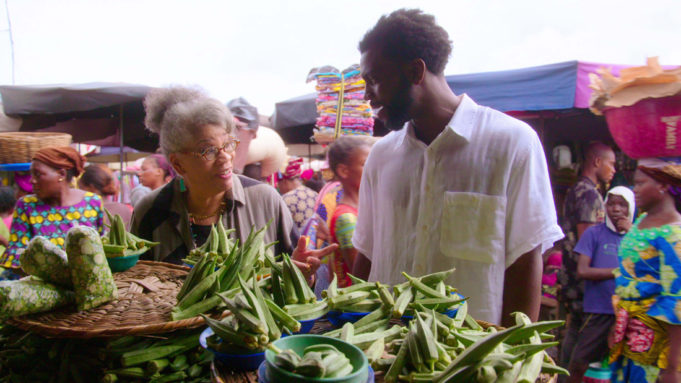I spent part of this past Juneteenth watching Netflix’s High on the Hog: How African American Cuisine Transformed America, and it felt appropriate to the new national holiday. If you watch a lot of TV shows about food, you’ve probably noticed that they feature mostly white people. It’s hard finding anybody of color on these shows, and the brownface scandal at Bon Appétit tells you just how racist the seemingly apolitical world of food media can be.
Whether they’ve made a conscious effort to counteract this or not, Netflix has been a fount of information about Black food history. In his show Ugly Delicious, Chef David Chang interviewed African-American studies professor Psyche Williams-Forson about why America is the only country where there’s a stigma attached to fried chicken. On the delightful kids’ show Waffles + Mochi, food historian Michael Twitty told the puppet protagonists about how his ancestors were slaves who worked the rice fields in the South and helped establish the crop on the continent. In High on the Hog, writer Stephen Satterfield looks to expand our received notions of what African-American soul food is.
The first of the show’s four episodes has Satterfield going to Benin with Jessica B. Harris, whose similarly titled book is the basis of the program. She describes how she worked as the travel editor for Essence magazine in the 1970s and, in traveling through West Africa, found connections between their food and the food she knew back home in the South. The present-day country of Benin was once center of a much larger kingdom called Dahomey, which was a hub of the slave trade with the Americas. The cooks there keep the traditions of African foods with mashed yam (Harris finally sorts out the confusion between yams and sweet potatoes) and the red palm oil familiar to us from jambalaya and Charleston red rice.
At the same time, the Chill N’ Grill Restaurant in the city of Cotonou pushes the cuisine in new directions, with French-trained Chef Sedjro Ahouansou turning the traditional piron (cassava paste and pork juice) into a dessert sushi with pineapple and coconut. Were you surprised that there were haute cuisine restaurants in this corner of Africa? I’m ashamed to say I was. Maybe the most astounding sight in the whole series is Satterfield’s visit to Ganvie, a massive floating village and market on the coast, where Satterfield samples a peanut dessert called councada and says it reminds him of Baby Ruth bars.
Satterfield may not be the most vibrant host, but what stories he has to tell! In the third episode, he talks about Thomas Downing, the 19th-century son of Virginia slaves who went from selling oysters from a sidewalk cart in Manhattan to building his own tavern on Wall Street. While he was serving the city’s power elite on white tablecloths underneath a crystal chandelier, he and his son were hiding runaway slaves in their storage rooms.
The episode also traces the histories of George Washington’s and Thomas Jefferson’s personal chefs, both enslaved men who produced renowned dishes for their masters and their illustrious guests. James Hemings — whose sister Sally bore Jefferson’s children — used techniques he had learned from French chefs while accompanying Jefferson to France to eventually win his freedom, and Satterfield stands in the kitchen at Monticello with food historian Leni Peterson and descendants of Hemings to make the same macaroni and cheese dish that James once made there. (They cook the noodles in a mixture of milk and water, then bake them with butter and cheddar in a Dutch oven placed directly on the fire, with glowing hot coals piled on top of the lid.) The episode concludes with a feast of Philadelphia dishes such as Bellevue broth and pepper pot stew that will cure you of any notions that African-American food only means Southern food.
The final episode looks at the role of Black people in Texas barbecue, which I daresay Texan ’cue heads will know more about than the general audience to whom the show is pitched. It’s a pity High on the Hog runs only four episodes, because I feel that there are more stories to tell on this subject. (How about Edmond Albion, the 19th-century slave boy on Réunion Island who figured out how to pollinate vanilla orchids by hand and never saw any profit from birthing a billion-dollar industry?) When a show is this informative and surprising, we want seconds.












